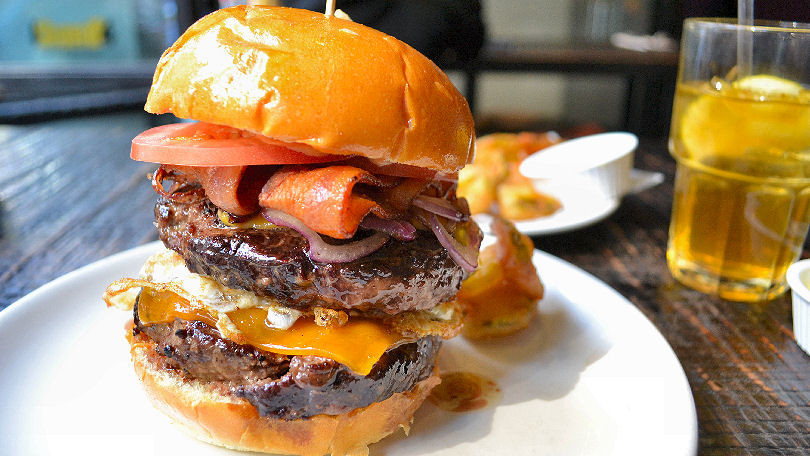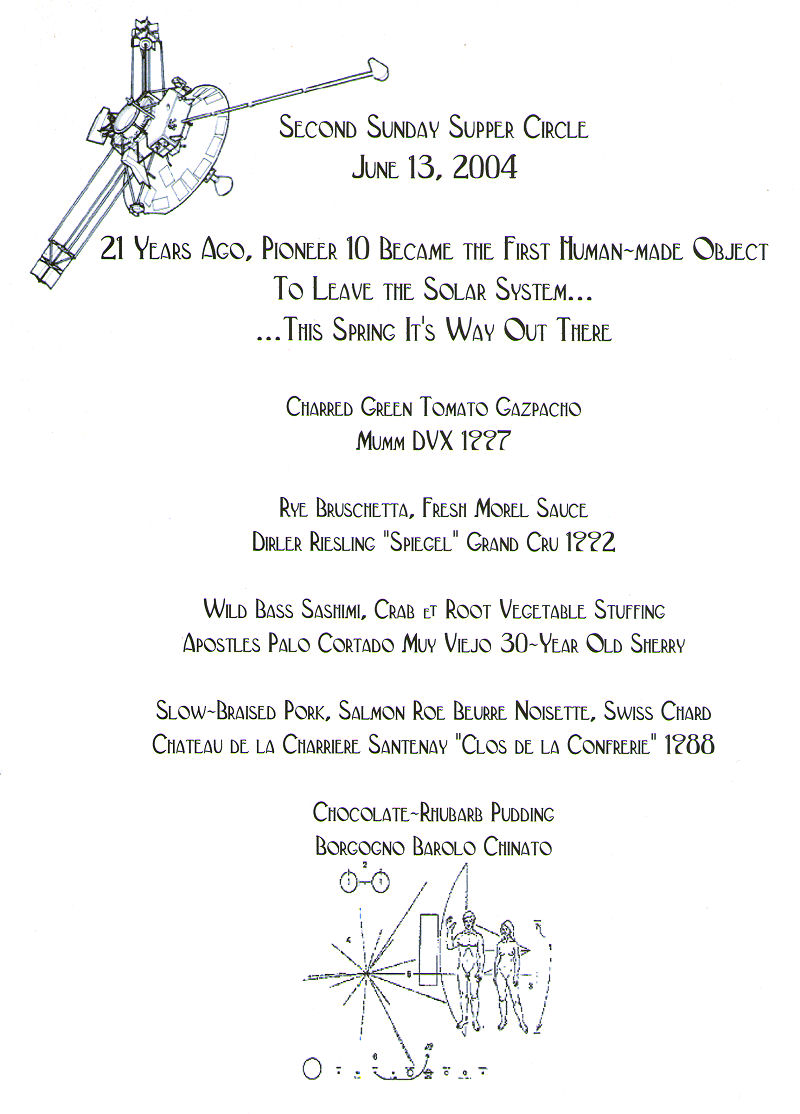Pop My Cherry
October 13, 2004
Sorry, that was just to get your attention.
I’m on a bit of a mission. It’s somewhat casual, I can’t say I’m devoting a huge amount of time to it. But nonetheless, it’s a mission. I want to bring back the popularity of Maraschino. The liqueur, not the cherry. In fact, I find no excuse for the cherry.
That’s not entirely true. There is an excuse for the cherry, but that’s all it is, an excuse. Originally, maraschino cherries were made from various wild European sour cherries. They were steeped in Maraschino liqueur for days on end, much like brandied cherries are now. Packed in jars, they were shipped off to the wilds of gay Paree, where, in the late nineteenth century, they were all the rage.
Then came Prohibition. Another example of our country carrying a joke too far, something, as I keep reminding you, we’re quite good at. Somehow these wonderful, wild, sour, European cherries that had spent their days lazily floating about in liqueur were converted into what is, simply, an abomination. Some minion of evil, unknown to me, took sweet cherries, pickled them overnight in salt, sugar and alum to bleach them, then soaked them in red food coloring and a sugar solution to produce the vivid vermillion balls we now find sunken in our drinks. So that’s the excuse.
To finish off with the cherries themselves. Try making your drinks with brandied cherries, which are readily available in fine food shops. You’ll be surprised at how much more interesting they are. Even better, if you’re making drinks at home, make your own. It’s not that hard to put a bunch of cherries in a jar and fill it with brandy… or better yet, the original, Maraschino liqueur, and let them soak for a few weeks.
Which brings us back to my mission. It was a serendipitous find, this liqueur. Well, sort of. You see, I was reading a novel of historical fiction – a fascinating book, Cryptonomicon, by Neal Stephenson. The details of the book are irrelevant, but there was a passage in the book where two of the characters pop open a tin of caviar. A discussion ensues in which one asserts that the typical vodka or champagne accompaniments are just plain wrong, and that the original drink that the czars of Russia imbibed with good caviar, was a good shot of chilled Maraschino.
I had to try it. My friends and I were stunned at how well the two went together. The slightly bitter, slightly sweet, intensely cherry flavored liqueur balanced perfectly against the briny, crunchy sturgeon roe. It was a match made in heaven. Not that I eat much in the way of caviar on my budget, but I doubt I’ll ever have anything else with caviar again.
Which led me to explore this liqueur. Again, once wildly popular, it has for the most part become one of those bottles on the back bar, or even hidden away, or even non-existent, at most drinking establishments. To the best of my knowledge only two brands are currently imported to the United States, though they are by no means the only ones made. Luxardo and Stock. The former is probably the most recognizable – coming in a thin green glass bottle, the lower two-thirds covered in wicker. The Stock is slightly sweeter, and has a less interesting bottle. The Luxardo has a touch more of that bitter note.
Maraschino is a clear liqueur made from marasca cherries. These are grown throughout the Dalmatian coast area, i.e., Croatia and Istria. The liqueur is made from both the juice of the cherries and the essence of the crushed cherry pits, which is where the hint of bitterness comes from.
There are dozens upon dozens of old cocktail recipes (and here and there new ones) that make use of this spirit. Any good bar book will direct you to several, the top bartending websites like Webtender and DrinksMixer list, respectively, 49 and 117 cocktail recipes that make use of it. I recommend it. I urge you to try it. Oh just go out and buy a bottle, throw it in the freezer, buy a tin of good caviar, and serve shots alongside. You won’t be disappointed.
Boomerang
2 ounces of dry gin
½ ounce of dry vermouth
2 dashes of bitters
½ ounce of Maraschino
Shake these ingredients with ice. Strain into a martini glass where you will delight to the beautiful soft peach color. Garnish with a proper cocktail cherry, i.e., either a homemade Maraschino cherry as discussed above, or a brandied cherry.
Wine picks for this column:
Cantina Nalles & Magre Niclara Pinot Bianco, 2003
Pinot Bianco, or Pinot Blanc, is one of my favorite white grapes. In the hands of a skilled winemaker it somehow seems to combine the steeliness and dryness of a good Pinot Grigio with the delicious aromatics of a Pinot Noir. Not surprising, since all three come from the same family of grapes. This is one of those delicious examples. My only disappointment – the wine in former vintages used to come in a bottle with a beautiful label adorned with a Venetian print, and was called “Lucia”. Now it comes with a somewhat ordinary label with a little countryside scene, reminiscent of a dozen other producers’ wines from the Alto Adige area of Italy. Still, the wine is a find. Pair this up with spicy preparations of seafood, vegetarian dishes or lighter meats. From Village Wine Imports, 212-673-1056. Around $10.
El Chaparral de Vega Sindoa, 2002
Spain, and the Navarra area in particular, is the current source of many of the new, hot wines hitting the market these days. It is worth your time and effort to explore as many of these as you can. This particular gem has been a favorite vintage after vintage, and the new release of the 2002 is no exception. Made from old vine Garnacha (Grenache) grapes, this is a concentrated flavors of raspberries and slightly sour cherries, peppery, simply stunning glass of wine. This is a great wine to go with grilled and smoked foods, or just to have on its own. From Jorge Ordonez’ Fine Estates from Spain, 781-461-5767. Around $12.
I started writing food & wine columns for the Outlet Radio Network, an online radio station in December 2003. They went out of business in June 2005.


